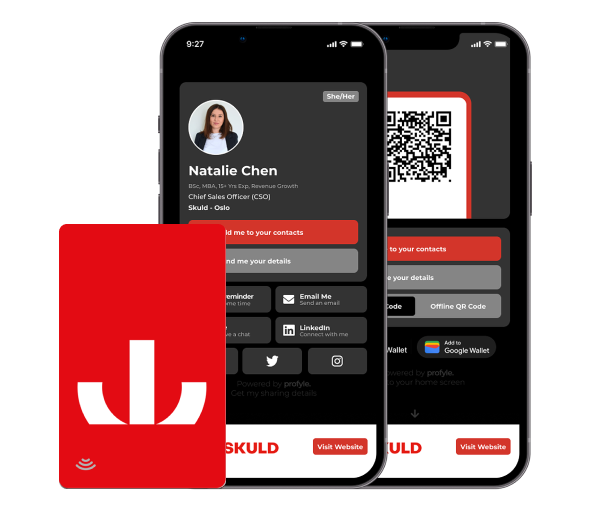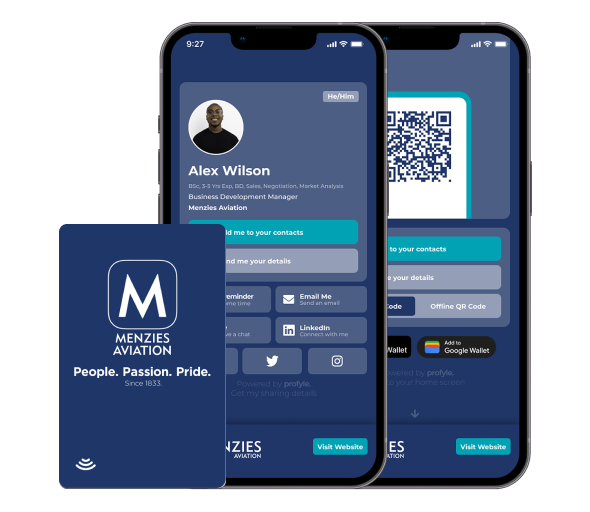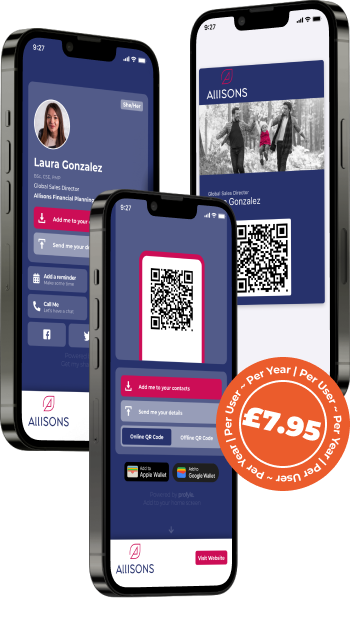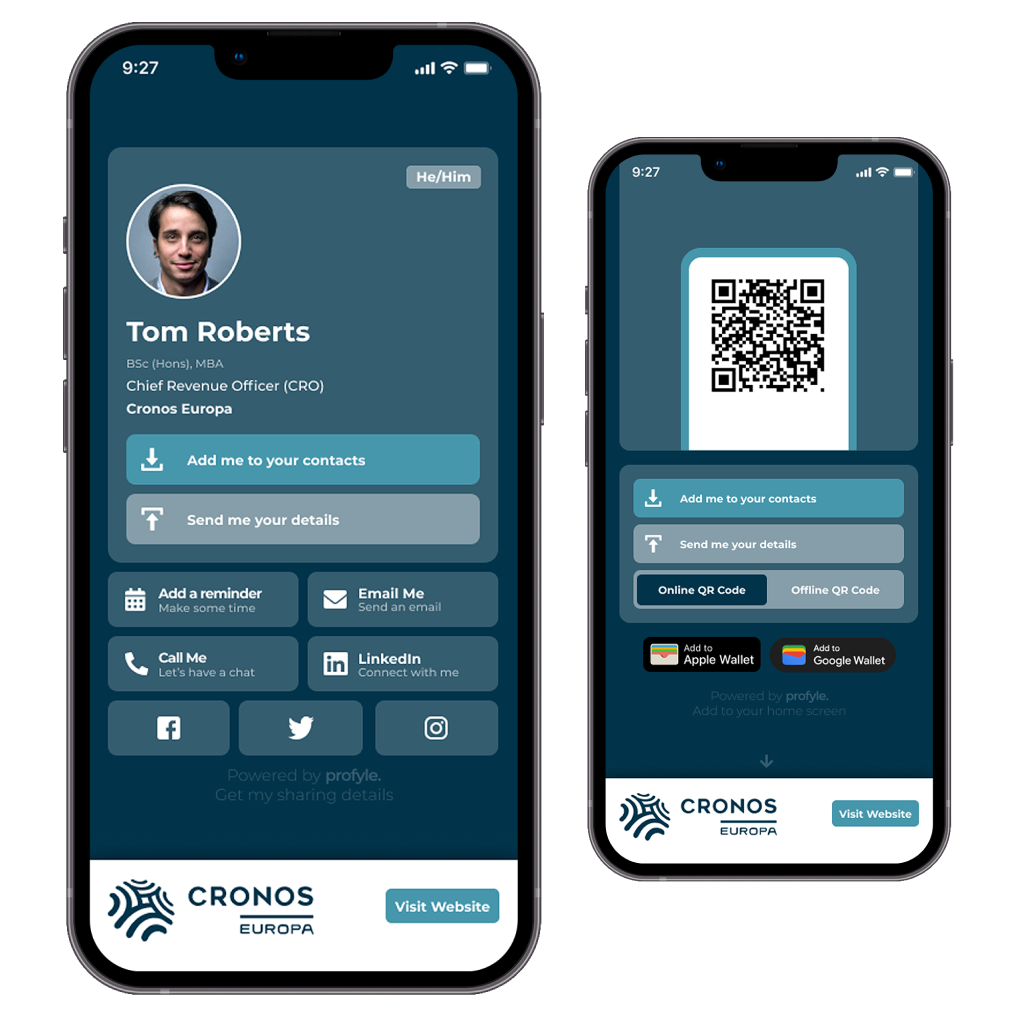Did you know that millions of trees are cut down every year to produce business cards? Business cards are something small and simple, yet they leave a massive impact on the environment. The data is staggering. It shows a clear need for green, sustainable business cards.
Here is the gist of the massive problem.
Most paper business cards are made from virgin paper. This means trees are cut down just to make them. The trees, which reduce carbon dioxide, are sacrificed in the name of convenience. 90% of business cards are thrown away in a week. So, they often end up in the rubbish.
A typical business card may seem harmless. But, about 10 billion are printed every year. Now, multiply that by all the other paper products in use. The numbers become overwhelming.
This wasteful practice leads to the loss of millions of trees annually.

Why Paper Business Cards are Not Sustainable
Many types of paper are used for business cards. But, almost all harm the environment. Let’s break down the common types:
-
Virgin Paper: This is paper made from fresh wood pulp, which means trees are cut down specifically for it. This is the most common material used for business cards. Every 2,000 cards require about one tree.
With 10 billion business cards printed each year, about 5 million trees are cut down for them. These trees’ loss means less oxygen and more carbon dioxide. Do you want to contribute to these sad statistics, or would you prefer an alternative like Profyle’s digital business cards?
-
Glossy Paper: Many business cards use paper that is coated in plastic to give it a shiny, professional look. If this glossy finish includes plastic – it isn’t biodegradable, meaning the card can take years to break down in a landfill.
Worse, the production of glossy plastic paper releases harmful chemicals into the environment. Look for glossy paper made using china clay, which is biodegradable. Furthermore, most china clay is mined right here in the UK, in Cornwall – giving a local source of production.
-
Laminated Cards: Some business cards are laminated for durability, which involves adding a layer of plastic. This makes the card non-recyclable and increases the environmental footprint. The plastic coating prevents the cards from breaking down naturally, adding more waste to landfills and oceans. Laminating paper raises the cards’ carbon footprint. It has a high environmental cost.
Finally, using thicker, high-quality paper for a luxurious feel harms the environment more. The thicker the paper, the more trees are required, and the higher the carbon footprint from transportation and production.
The Ecological Impact
When you think about the impact of cutting down trees for something as small as a business card, the new perspective is eye-opening. Trees play a huge role in absorbing carbon dioxide and producing oxygen. Losing them means more carbon dioxide stays in the atmosphere, contributing to climate change.

Deforestation is responsible for about 10% of the world’s greenhouse gas emissions. But the problem goes beyond just carbon emissions. Forests are home to 80% of the world’s terrestrial animals and plants.
Every time a tree is cut down, the delicate balance of the ecosystem is disturbed. Some species may lose their homes, which leads to a loss of biodiversity.
Why Digital Business Cards Are Better
With all the harm that paper business cards cause, digital business cards present a solution. They don’t require trees, paper, or harmful chemicals to produce. A digital business card can be shared via email or phone and updated whenever necessary without wasting any resources.
When you switch to a digital business card, you’re not just reducing your carbon footprint. You’re also showing clients and contacts that you care about sustainability. In today’s world, people are more likely to support businesses that take responsibility for the environment(

If you want to make a difference and reduce your impact on the planet, consider switching to Profyle’s digital business cards. With digital cards, there’s no need to worry about waste or environmental harm. Plus, Profyle’s cards are easy to use and customizable.
The “Eco” in Eco-Friendly Stands for Ecology
The consequences of cutting down trees for paper go beyond the immediate loss of wood.
Trees are essential to maintaining the health of our planet’s ecology. They absorb carbon dioxide, a greenhouse gas, and produce oxygen, which we breathe. One mature tree can absorb up to 48 pounds of carbon dioxide each year.
Cutting down 5 million trees every year to produce business cards, means we cannot offset 240 million pounds of carbon dioxide. This speeds up climate change. There are fewer trees to filter the carbon dioxide from humans and industries.
Furthermore, forests provide habitats for many species of animals and plants. By cutting down these trees, we contribute to the destruction of these ecosystems. According to some reports, 80% of the world’s terrestrial animals and plants live in forests.

Removing trees disrupts the balance of these ecosystems. Potentially leading to the extinction of some species.
2. Different Types of Eco-Friendly Business Cards
When looking for eco-friendly alternatives, it’s important to know the various types of business cards that won’t harm the planet. Sustainable business cards aim to lower their environmental impact. They use renewable, biodegradable, or recyclable materials.
Digital Business Cards: The Best Eco-Friendly Option
Digital business cards are by far the most eco-friendly solution. There is no need for physical materials. So, no trees need to be cut down, no chemicals are used, and no waste is generated.

Digital business cards can be shared instantly via a tap of a NFC card or a smartphone, making them convenient and accessible at any time. They can also be updated easily, so you don’t need to print new cards every time your information changes.
Digital business cards cut your carbon footprint. They also show a modern, forward-thinking approach to business. Making that all-important great first impression during events and networking.
By opting for a Profyle digital business card, you can significantly lower your environmental impact. Profyle’s platform is carbon-neutral certified. This means their services’ carbon emissions are fully offset through accredited carbon-reduction projects.

Alternatives
While digital business cards are the best option, let’s explore some of the most common paper-based types. These are not as good as digital business cards but offer a more sustainable approach than traditional paper.
Recycled Paper Business Cards
Recycled paper business cards are one of the most popular eco-friendly options. These cards are made from post-consumer waste, meaning they reuse paper that has already been discarded. This helps to reduce the need for virgin paper, cutting down on deforestation.

Recycled paper business cards use few chemicals. This makes them easier to recycle when no longer needed. Some companies, like VistaPrint, use Forest Stewardship Council (FSC) certified paper. It ensures the paper comes from responsibly managed forests.
Seed Paper Business Cards
Seed paper business cards offer a creative and sustainable twist. These cards are made from biodegradable paper embedded with seeds. After the card has served its purpose, it can be planted to grow flowers, herbs, or trees. This type of card not only avoids creating waste but also contributes to reforestation and plant growth.

Botanical PaperWorks makes seed paper business cards. They offer various seeds, making each card unique and eco-friendly.
Cotton Business Cards
Another sustainable option is cotton business cards. These are typically made from recycled cotton, often from discarded clothing like old T-shirts. Cotton business cards have a soft texture and give off a luxurious, high-quality feel. They are fully biodegradable. So, they are popular with eco-friendly businesses. Companies like MOO offer cotton cards that are 100% tree-free.

Using cotton instead of paper helps reduce deforestation. It also gives your business card a durable, eco-friendly touch.
Wooden Business Cards
Wooden business cards are made from thin sheets of sustainable wood like oak or bamboo. These cards can be laser-engraved with your contact details, making them both durable and memorable. Though they come from trees, they are often made from wood that is either sustainably harvested or reclaimed. This minimizes their environmental impact. The Plastic Card People and others offer FSC-certified wood. That makes sure the material is sourced responsibly.

Wooden cards are biodegradable and have a much longer life than traditional paper cards, making them less likely to be thrown away.
Biodegradable Plastic Business Cards
Some companies now offer biodegradable plastic business cards. They are a greener alternative to standard plastic cards. These are made from materials that break down more easily in the environment, such as corn starch or other plant-based plastics. Biodegradable plastics are not as green as digital cards. But, they reduce the long-term harm of conventional plastic.

3. The Harmful Impact of Paper Waste
Every year, paper products, including business cards, create a lot of waste. In fact, paper waste accounts for about 26% of all landfill waste.
Business cards may seem small. But billions of them printed every year add to a big problem. Each year, 10 billion business cards are printed. Most are discarded within a week. This creates a huge amount of waste that adds to landfills worldwide.
The Lifecycle of a Paper Business Card
The environmental toll begins long before a business card reaches your hand. The process starts with cutting down trees, which are then transported to paper mills. This transportation requires fuel, which produces carbon emissions. Once the trees arrive at the mill, they undergo intensive processing. It uses large amounts of water, chemicals, and energy. Paper mills are some of the largest industrial consumers of water and energy.

After printing, these business cards are packaged and shipped worldwide. This adds to their carbon footprint. Making one business card seems harmless. But, at billions, it wastes energy, water, and raw materials.
What Happens After the Card Is Discarded?
Once these cards are handed out, most end up in the rubbish within a week. If they are made from laminated or glossy paper, they are not biodegradable and can take years to decompose.
Even if they are made from recycled paper, only about 68% of the paper produced globally gets recycled. So using “recycled” paper is a bit deceptive. The rest ends up in landfills, where it slowly breaks down, emitting methane, a greenhouse gas more potent than carbon dioxide.
The Urgent Need for Sustainable Alternatives
Given this cycle of waste and pollution, it’s clear that a shift toward more sustainable practices is necessary. Reducing paper waste helps the planet. It conserves resources, cuts carbon emissions, and protects ecosystems.
Switching to digital business cards is an important step toward solving this problem. A digital card doesn’t need to be printed, distributed, or discarded. There’s no paper waste, no chemicals, and no need for recycling because digital cards live on the internet. They are easy to share and update, making them a practical and eco-friendly alternative to paper cards.
Profyle’s digital business cards are a sustainable choice. They reduce waste by avoiding paper and Profyle offsets its carbon emissions. This keeps using Profyle eco-friendly.
By using digital business cards, you can take a significant step in reducing paper waste and lowering your impact on the planet.

4. Why Sustainable Choices Matter
Today, your business has many ways to impact the environment. These choices get noticed by consumers and partners across the value chain. Thus, when you choose a sustainable option like a digital business card, you are helping the planet and building a positive brand image.
Consumers and partners are increasingly drawn to companies that show environmental responsibility. In fact, studies show that nearly 90% of consumers expect businesses to operate responsibly when it comes to the environment.
By doing what’s right, you secure your own future and that of the society. As natural resources dwindle, the need for sustainable business practices is urgent.
By using eco-friendly options, you can lead the way to a greener future. This will encourage others to follow.
The Ripple Effect of Sustainable Business Choices
Every small decision, like switching to eco-friendly or digital business cards, creates a ripple effect. When one company makes this change, it influences others within its network.
For example, your management might use a digital business card at an important meeting, prompting others to ask how they can do the same. This kind of influence grows, helping to drive widespread adoption of greener practices.
In the business world, setting a strong example can carry a lot of weight. Using digital business cards can inspire others to consider their environmental impact. That’s how real change happens. Not through massive upheavals. But, through consistent, small steps taken by businesses worldwide.
Benefits Beyond the Environment
Switching to sustainable business practices doesn’t just benefit the environment; it can also be good for your bottom line. Digital business cards, for instance, eliminate printing costs and shipping fees. They can be updated instantly without the need to reprint hundreds or thousands of new cards, which saves both money and resources.
Moreover, eco-friendly businesses often attract more customers. As sustainability is now a priority for consumers, it gives an edge to companies that act responsibly. Recent research shows that 55% of global consumers will pay more for products or services from eco-friendly businesses.
By choosing digital business cards, you’re not just cutting down on waste—you’re showing your customers that you care about the planet.
Make the Switch to Profyle
Profyle offers an easy solution for businesses looking for digital business cards. Our platform allows you to create and share cards that are beautiful, fully customizable, and super easy – all without harming the environment.

Using Profyle’s digital cards can reduce waste and save money. It will also meet the demand for sustainable practices. More importantly, you can make a positive impact on the planet and encourage others to do the same.
5. Choosing the Best Eco-Friendly Business Card for You
Choosing the right eco-friendly business card depends on your needs, preferences, and goals. Whether you want a card that makes a bold statement or simply one that reduces your carbon footprint, the options are plentiful. Here’s how you can decide which type of eco-friendly business card best suits you:
1. Assess Your Environmental Impact

The first step in choosing the right eco-friendly business card is to think about how much of an impact you want to make. If you’re aiming to reduce waste as much as possible, consider digital business cards, which leave no physical footprint at all. These cards eliminate the need for paper, ink, and transport, making them the most sustainable option available.
For those who still prefer a tangible card, you can order a physical NFC card from Profyle along with a virtual business card.
2. Think About Your Brand
Your business card is often the first thing a new contact sees, so it’s important to choose a design that reflects your brand. If your business values innovation, a digital-only business card is perfect.
- A Profyle digital business card with a QR code lets you fully customize design, layout, and content by department or use case. It lets you present your brand in a sleek, professional way to everyone in your organization, all without harming the environment.
- The virtual card can be shared instantly via smartphones, email, or social media, and updated as needed.
- If your brand has a more tactile, natural feel – cards made from cotton can work well together with a digital business card. You will still save money but have an amazing 1-2 combo of the digital and physical together.
3. Consider Longevity and Durability
Another factor to consider is how long your business card will last. Digital business cards can be updated and used endlessly, making them the most durable option. If you absolutely need a physical card, but are concerned about waste, then you can get an NFC card along with that.
Alternatively, wooden or cotton business cards can last much longer than paper cards and are less likely to be discarded quickly.
4. Budget Considerations
While sustainability is important, the budget is also a key consideration. Some eco-friendly options, like recycled paper cards, are cheap. Others, like wooden or cotton cards, are more expensive due to the materials and production methods.
Digital business cards, like those from Profyle, are often cheaper over time. The longer you use them – the more you save. They don’t need reprinting or reordering, and they save on shipping and printing costs.
What is The Most Sustainable Business Card?
After evaluating all the options, it’s clear that digital business cards stand out as the most sustainable and versatile choice. They produce zero waste. They allow instant sharing. They can be updated anytime without creating physical waste. Profyle’s digital business cards are carbon-neutral. Their energy use is offset by accredited carbon reduction projects.

Profyle: The Best Option for Sustainable Networking
Switching to Profyle’s digital business cards is a simple yet powerful way to show your commitment to sustainability. Our platform is carbon neutral and we are also B-Corp certified.
- That means every shared Profyle digital business card helps offset carbon emissions.
- It also saves physical resources.
- Lastly, it is a way to for you to partner with a socially and environmentally accountable businesss.
With Profyle, your business not only looks modern and innovative but also takes a stand for the environment, showing clients and partners that you care about the future.
Frequently Asked Questions
What makes a business card eco-friendly?
An eco-friendly business card uses sustainable materials and green methods. These cards can be made from recycled paper, cotton, wood, or even seed paper that can be planted. Sustainable production uses non-toxic inks. It reduces water use and cuts carbon emissions in manufacturing. However, the most sustainable option is to have a digital business card.
What are the main certifications for sustainable business cards?
Eco-friendly certifications show that your chosen business card meets environmental standards. Look for certifications like:
-
FSC Certification: Ensures that the wood or paper used comes from responsibly managed forests.
-
Rainforest Alliance: It certifies that production protects biodiversity and promotes sustainable land use.
-
Carbon Neutral: Some companies, like Profyle, offset their carbon emissions. They use verified carbon offset projects. So, your business cards won’t add to global carbon levels.
How do I transition to more eco-friendly digital business cards?
Switching from paper business cards to digital ones can feel like a big leap. This is especially true if your business has used physical cards for a long time. But switching to digital business cards is easier than you think. The benefits of the change make it worthwhile.
-
Choose the Right Platform.
-
Customizability: The ability to design your card to match your brand.
-
Ease of Use: A user-friendly platform that allows you to quickly create, share, and update your cards.
-
Integration: Does the platform allow you to integrate your digital card with your email, social media, or CRM?
-
-
Educate Your Team. Train your people on how to use them and highlight benefits like:
-
Instant Sharing: Digital cards can be shared via email, text, or QR code, making it easier to connect with potential clients and partners.
-
Eco-Friendly: Digital cards cut waste and help the environment. They eliminate the need for paper and printing.
-
Cost Savings: Digital cards eliminate printing and reordering costs, saving your business money in the long run
-
Why should I switch to more sustainable digital business cards?
-
Make it Part of Your Culture. Sharing digital cards is fast, fun, and convenient.
-
Digital business cards don’t run out. If you’re attending a large networking event or conference, there’s no worry about printing enough cards for everyone. You can share your card with as many people as needed without ever needing to reorder.
-
Traditional business cards often get lost, damaged, or tossed out. Digital business cards, on the other hand, can be shared instantly via email, text, or a simple tap on a phone. They’re stored in a format that’s easy to access anytime, anywhere. No more fumbling through wallets or bags looking for a card—you have it at your fingertips.
-
The environmental benefits of switching to digital business cards are huge. Digital cards cut waste by eliminating the need for paper, ink, and physical production. They also reduce carbon emissions from printing and shipping. With millions of business cards discarded each year, the environmental impact of paper cards is significant.
-
Many digital business cards, like those from Profyle, have features like QR codes or NFC (Near Field Communication). They let recipients save your contact info by scanning or tapping their phone.
-
Do I need special technology to use digital business cards?
No, digital business cards are easy to use and don’t require special technology. They can be accessed and shared from your smartphone, email, or any device with internet access. Platforms like Profyle are user-friendly and compatible with both iOS and Android devices
Are digital business cards cost-effective?
Yes, digital business cards are often more cost-effective than physical cards. There are no printing or shipping costs, and they can be updated without needing to reorder. They save money in the long run. This is true for businesses that often update their info or attend big networking events.













